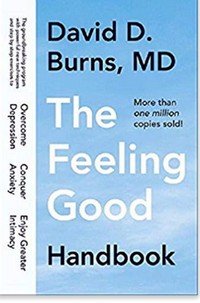Disputing Overgeneralizations
|
|
Hi Newbie,
Welcome!
I often use “overgeneralization” in a loose way to mean exaggeration. However, if you are using the term in the way that Burns coined it,
OVERGENERALIZATION: You see a single negative event as a never-ending pattern of defeat. You arbitrarily conclude that one thing that happened to you once will occur over and over again. For example, if you get passed over for promotion on the job, you might erroneously conclude: “I’ll never get the promotion!”
I don’t quite follow your question about “how” to dispute overgeneralization. If you understand the nature of cognitive distortions, that is really get it that they are distorted, and if you understand how to use Burns’s three column, or Ellis ABC or Edelstein 3 minute, you dispute overgeneralization the same way you would any other distortion.
Regardless of which of the several disputing techniques you prefer, they all follow a similar logic and process, although not necessarily in this order.
1, There is an event (internal or external) and a strong emotional reaction to the event. Ellis calls it “A” the Activating Event.
2. You identify something you have said, written or thought as a distortion or irrational belief.
3. See how this distortion is inflaming your negative emoting. Really see the connection.
4. Dispute the distorted thinking until you really get it that the thinking is indeed distorted, irrational and unhelpful. Often it is total horse shit. Maybe you need to explain this to yourself as if you were speaking to a child who isn’t very bright.
5. Replace the distorted thinking with thinking that is cooler, more rational and helpful.
6. Take action. Try acting in a way that is counter to previous self-defeating behaviors.
Of course Dr. Ellis was talked about overgeneralization. However, in the “prism” he used to explain the cognitive distortions, he reduced them to just four, and often said that they could all be reduced to demandingess (should statements).
(1) Demanding,
(2) Awfulizing,
(3) Low Frustration Tolerance, and
(4) People Rating,
These lists or itemizations of distortions are arbitrary. Burns came up with ten because that is a catchy number and good for lists in self-help books. It could have been eight or twelve just as easily. I am presuming that Ellis felt that four IBs was the smallest number that clients could make use of in a practical way. However, I have no doubt that in a couple of hours, I could expand Burns’s ten to twenty by coming up with sub-sets and subtle variations of each of the original ten. The important question is, would there be an practical point to doing that? Would it make his list more powerful, easier or more difficult to understand and use?
 |
 |
 |
 |
Because memory systems are one of my hobbies, when I first read “Feeling Good…” it seemed perfectly natural for me to memorize the ten cognitive distortions. Whether or not you use memory devices, I highly recommend this (seemingly pedestrian) way of getting a handle on REBT-CBT. Memorize them, keep a list handy while you go back over something you have written, or someone else has written. Take a yellow highlighter pen and highlight all the distortions you can find. Take them through a three column, ABC or three minute. In the beginning it is usually easier to identify, dispute and replace other people’s bull shit, but in time you can just as readily do your own. Once you get this mechanical and theoretical grounding and get a little practice with it on things that don’t matter much, you will be in a much better position to dispute some important, emotional event that comes up for you.
Aloha,
Rex
Khon Kaen, Thailand
![]()
Originally posted 2017-06-07 00:00:23.
- How many books on REBT-CBT do I need to read? - Fri 1 Nov 24
- How Positive Thinking is Undermining America - Thu 31 Oct 24
- 39 grams of sugar in a can of Coke!Yuck! - Thu 31 Oct 24
